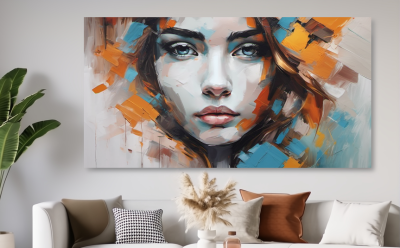Painting, one of the oldest and most revered forms of artistic expression, schilderij has the remarkable ability to transcend time and culture. From ancient cave paintings to contemporary masterpieces, this medium has captured human experiences, emotions, and visions for millennia. This article explores the multifaceted nature of painting, its historical significance, and its enduring relevance in the modern world.
A Brief History of Painting
The origins of painting date back to prehistoric times, where early humans used natural pigments to create images on cave walls. These primitive artworks, often depicting hunting scenes or symbolic figures, served as a means of communication and ritualistic expression. As civilizations evolved, so did the art of painting, with notable advancements during the Renaissance, when artists like Leonardo da Vinci and Michelangelo pushed the boundaries of realism and perspective.
The evolution of painting techniques continued through various movements, including Baroque, Impressionism, and Abstract Expressionism. Each movement brought forth new styles and philosophies, reflecting the changing social, political, and technological landscapes. Today, painting encompasses a wide range of styles, from traditional oil on canvas to mixed media and digital art.
The Emotional Impact of Painting
One of the most compelling aspects of painting is its ability to evoke emotions. Colors, shapes, and forms can resonate deeply within viewers, often eliciting responses that are both personal and universal. For instance, the vibrant reds and yellows in Van Gogh’s “Starry Night” evoke feelings of passion and turmoil, while the serene blues in Monet’s water lilies bring about a sense of calm and tranquility.
Artists often channel their emotions into their work, creating a powerful connection between the creator and the observer. This connection can serve therapeutic purposes, allowing both the artist and the viewer to explore and confront their feelings. Art therapy has become a recognized practice, using painting as a medium for emotional expression and healing.
The Role of Painting in Society
Painting has always played a significant role in society, serving as a reflection of cultural values, political ideologies, and social issues. Throughout history, artists have used their work to comment on the world around them, from the social realism of Diego Rivera to the protest art of Keith Haring. In this way, painting becomes a vehicle for social change, raising awareness and inspiring action.
In contemporary society, painting remains relevant as artists tackle pressing issues such as climate change, identity, and inequality. Art exhibitions often serve as platforms for dialogue and education, encouraging viewers to engage with important topics. Moreover, street art has emerged as a powerful form of expression, with murals and graffiti challenging norms and beautifying urban spaces.
The Intersection of Technology and Painting
The advent of technology has also transformed the world of painting. Digital painting and design have opened new avenues for artists, allowing for innovative techniques and broader accessibility. Software programs like Adobe Photoshop and Procreate enable artists to create stunning digital artworks that can be shared globally, reaching audiences far beyond traditional galleries.
Despite these advancements, the tactile experience of traditional painting remains irreplaceable for many artists. The physicality of applying paint to canvas, the smell of oil and turpentine, and the satisfaction of layering colors all contribute to the unique experience of creating art. This blend of old and new continues to inspire a dynamic dialogue within the art community.
Conclusion
Painting is a profound form of expression that transcends barriers and speaks to the human experience. Its rich history, emotional depth, societal impact, and evolving nature make it a vital component of our cultural landscape. As we move forward in an increasingly digital world, the significance of painting as a medium of expression, connection, and reflection remains as powerful as ever. Whether through a vibrant canvas or a thought-provoking mural, painting will continue to inspire, challenge, and transform us for generations to come.

